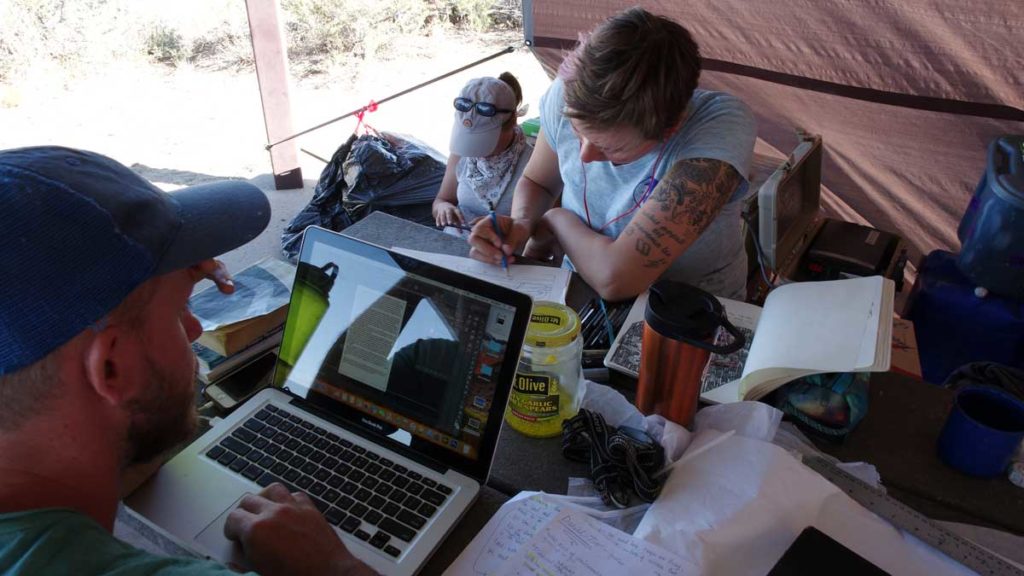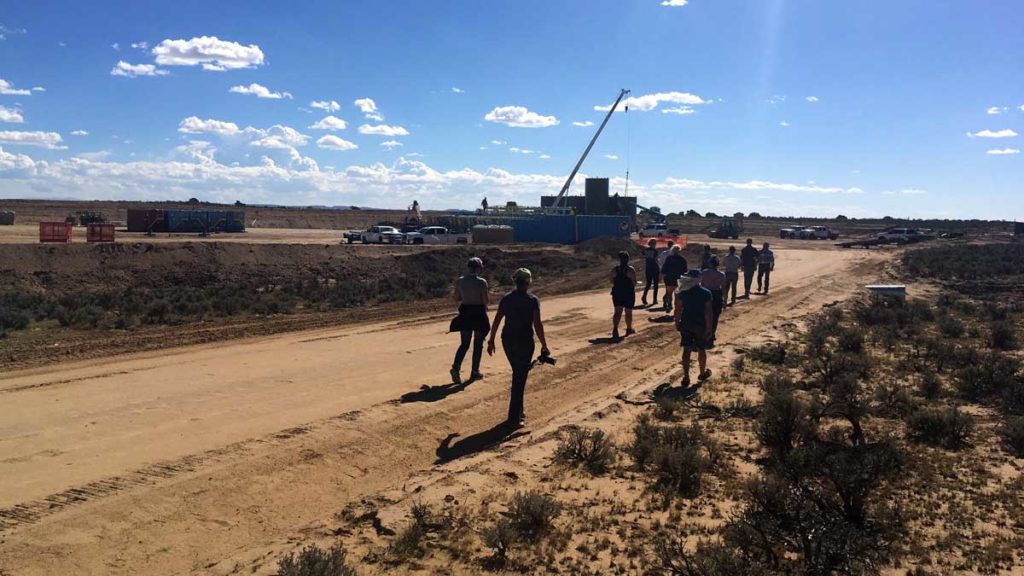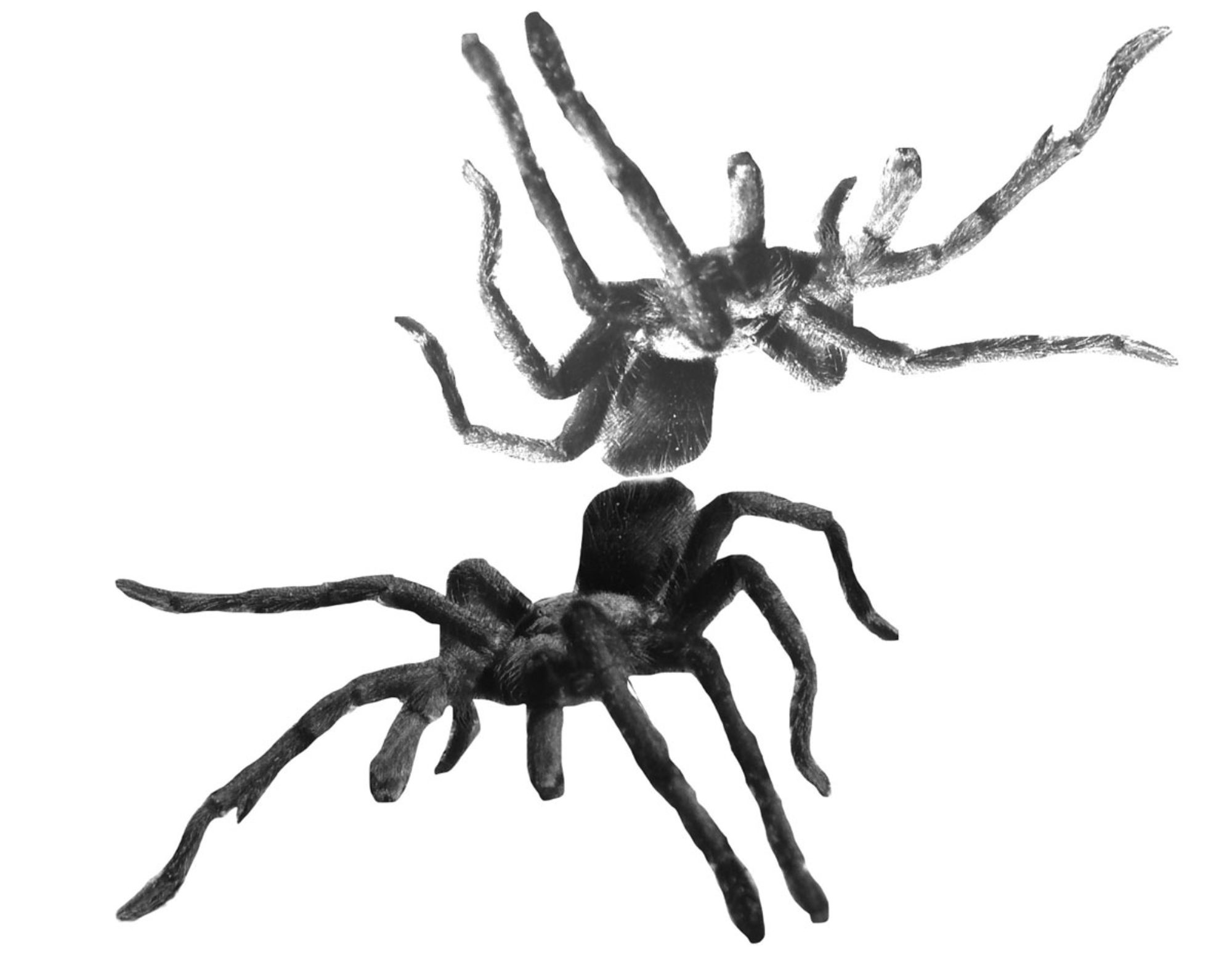
“Creating these zines was an unspeakably emotional, communal, and artistic effort. Working on location in the elements at Angel Peak in northwest New Mexico, with the sound of oil and gas infrastructure all around us, and with the personal testimonies of local people on the insidious impacts of that infrastructure on their and their family’s lives ringing in our ears, resulted in a creative outpouring that was raw and deeply personal. We felt moved to use our platform to make a visual and textual recounting of our time in the land and with the community that would amplify the voices of the Dine individuals who had shared their stories of generations of environmental racism, now manifest in the leasing of their ancestral and sacred lands for fracking.”
-Erin Gould
“The zines that were censored out of the museum were a collaboration with the Greater Chaco Coalition and Land Arts of the American West. They were meant to amplify the cultural strain and public health problems caused by fracking. This censorship amounts to a stifling of indigenous voices almost to a point of advocacy of environmental racism. This is a strange stance for a state department to take, especially one who claims to concern itself with cultural affairs.”
-Kyle Holub
“We were charged the community of Counselor, New Mexico to hold this experience in our hearts and minds and share what is forming there with our communities. We pass this charge onto you.”
-nicholas b. jacobson
“When I visited the Greater Chaco area, I wasn’t fully prepared on what I was going to experience. I knew very little of what was going on, so when I was meeting with people and going on the Fracking tour, I wanted others to know what is happening in our backyard… As an artist, I need to spark conversations and invoke feelings to more than the audience that it is currently reaching. I knew that there would be some that would continue blindly overlooking what is happening to maintain their normal routine, but all the environmental, physical, and emotional damage impacts everyone on earth. The Diné people are just the front lines that are protecting everyone, but they can’t do it alone and need our support… Don’t become a boiled frog, jump out while you still have the strength”
-Xena Gurule
“Being in the Greater Chaco Region and hearing from the people who live in this area and know the land so well was an experience that opened my eyes to something happening a mere few hours away from where I’ve lived my whole life, and yet I never knew. I had seen that Chaco Canyon was threatened by fracking, but I didn’t know it had already started in the region, a home to many. The situation is not imminent, it is already happening. 91% of public land in Northwest New Mexico is already leased to oil and gas. Both from our experience camping in the area, and going on Daniel Tso’s Fracking is Fracking Reality Tour, we saw that these wells were ubiquitous and extremely close to human populations. On the tour, we saw one well, which had exploded a few years ago, in extremely close proximity to a house where a family was living at the time of the explosion. Surrounding these wells was the constant, pervasive sounds of motors. Surrounding the campsite where we stayed, you could hear these motors 24 hours a day. At one point, me and one of the other students walked over to one of them. It took about 3 minutes to walk to this site from our tents. We were up on a hill, looking down at a green cylindrical tank. A man in a truck drove into the fracking site while we watched. He got out, and turned a valve, letting some unknown gas into the air. He was wearing no mask, instead turning his head the other way, bending his other arm and nestling his head into the crease of his elbow. He stayed this way for about a minute, until turning it off. Soon after, he left. Around that site we found small black ball like objects, which we thought were some sort of strange rock. Later we learned that they were solidified oil that had come up from under the ground to the surface around the fracking site. I had a dream a couple days later. I was looking out across a landscape of rock with pools of water formed by wind and water over time- also known as tinajas. I was in front of a very large one, and coming out of it on the opposite side of me was a wide black flat plastic tube, similar to the ones we saw used to transport water in fracking. The tube was dipping into the water of the tinaja, and stretched as far as I could see and beyond. Although the tinaja was very large, if the tube sucked that water up, it would be gone in an instant. To me, it seemed a powerful image of the cognitive dissonance in American consumerist capitalist culture, of believing in infinite growth while living on a planet with finite sources of life giving essence. To keep the mirage going, our governments and corporations steal from lands and people, while ignoring the clear evidence that these practices are already hurting people and the earth. Being born of the earth and her elements, our health is inextricably tied to that of the land around us. Going on the Greater Chaco Region, and hearing the stories of Navajo and Pueblo leaders, we saw how this unsustainable way of overconsumption is disproportionately impacting the health and wellbeing of already marginalized communities. Everyone on this planet needs clean air and clean water to exist. These are the basis of life, and it should not be radical to ask that everyone is able to live in an environment that is clean, healthy, an environment that is conducive to life. All the waters are connected to each other, like the veins of the earth. One cannot be separated from another. All must be healthy to have a livable future for the next generations. When one is being poisoned it is the responsibility of us all to stop the damage from continuing and help restore what we can from the wreckage, before it’s too late.”
-Blaise Koller
“The tears that we shared and the emotions we felt while learning about these issues were only fragments of the destruction and heartache imposed onto this land from fracking. We carry these stories in our hearts, and the land wears them as scars. These issues are currently in some backyards and will soon catch up to the people who have the privilege to walk away from them. Clean water, air, and soil are not political issues, they are human rights and our responsibility to the earth.”
-Rowan Willow

